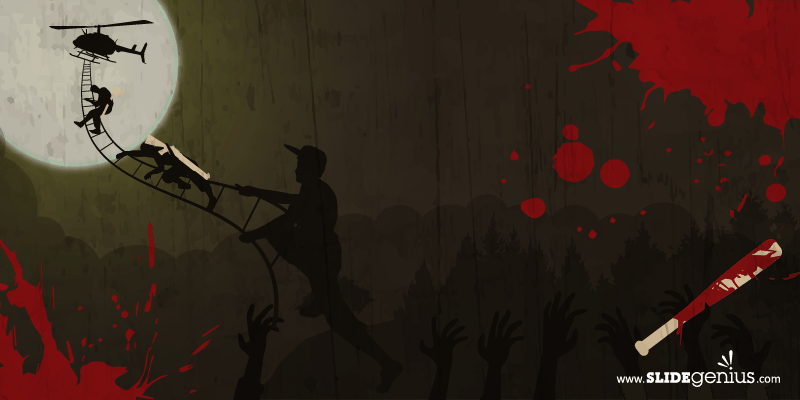Let’s be clear: delivering a business presentation is serious business, with high stakes. So next time you enter a room for a presentation, here’s a wild idea: be like a zombie. It might sound like crazy presentation survival advice, but hear us out.
According to authors Kenemore and Scott, zombies are the perfect soldiers because they can withstand massive amounts of damage and still plod forward. Remember, it’s your responsibility to keep going no matter what happens to your speech, good or bad. So don’t discount using a zombie-like approach, neither retreating nor surrendering from taking over the stage.
Adopt a cold and calm attitude to protect your professional appearance and achieve victory.
Here’s how to decisively win presentations with the acumen of a zombie:
Forget Fear

There’ll be no giving up once your reanimation has begun. You can never back out when faced with unexpected events during your pitch. Be brave enough to avoid disengaging at any point from your discussion. Reevaluate your approach and come up with another attack plan.
A lot of things can go wrong — negative feedback, a non-operational device, or corrupted files can come up while you’re presenting. Instead of panicking, focus on the solution and address the problem outright.
Just Attack

You don’t have to literally eat human gray matter. All you need to do is occupy space in your audiences’ mind, and make sure it’s worth it. Focus on getting them interested in your material. Take the lead and display valuable and helpful chunks of information that quenches your viewers’ hunger for learning.
Plan a strategy on how you’ll give them a decisive and informative dose of data. Start with a hook that hints to your main topic. Expound on your core idea by incorporating stories, statistics, and other factual evidence. Drive the final point in with a clear purpose to reach your audience on a personal level.
Walk with Others

Taking inspiration from the zombies’ creed, “no man left behind” is another tactic to step up the presentation game. Leaving no man behind, not even your listeners, builds solid engagement. Tailor your speech in a way that’s accessible for everyone. Research beforehand to ensure that your audiences’ needs and expectations are met.
Make them feel involved and give them the assurance of being taken care of until the very last slide of your PowerPoint deck.
You’ve Survived!

Zombies can be the most feared adversary anyone could encounter. They have this unexplainable ability to survive in the face of a nonstop onslaught. As a presenter, learning the zombies’ stance can keep you ahead of the competition. “No Retreat. No Surrender.”
Inflict yourself with these zombie-like traits and you’ll have no problem facing unexpected events. Attack your audience, not with bullets, but with helpful data. Leave no man behind for solid audience engagement.
Cultivate these strengths and be prepared to deliver award-winning, death-defying PowerPoint presentations.
References
Kenemore, Scott. The Art of Zombie Warfare: How to Kick Ass Like the Walking Dead. New York: Skyhorse Publishing, 2010.